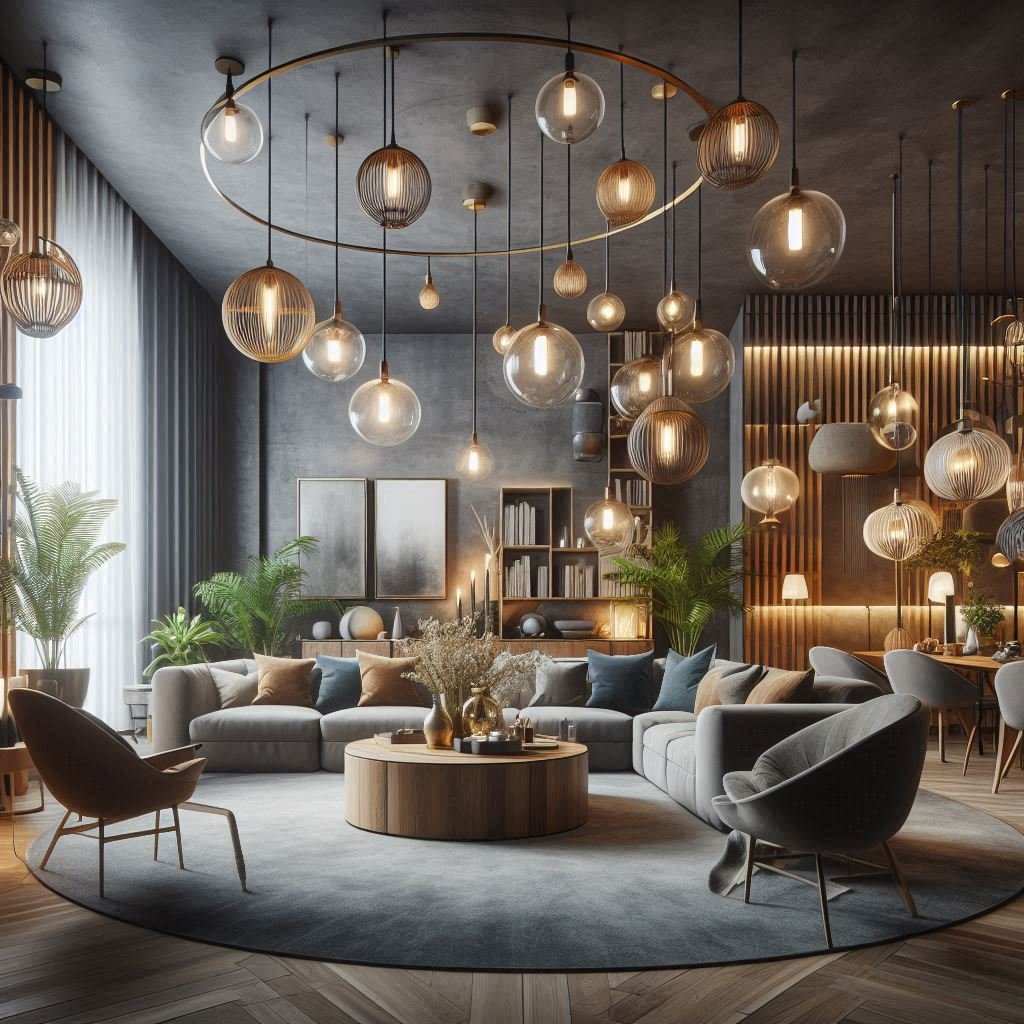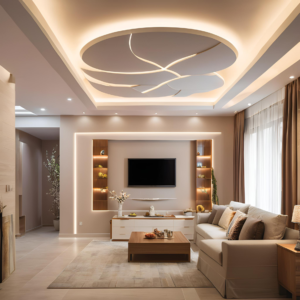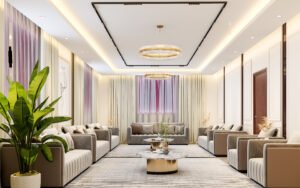The Role of Lighting in Interior Design
Lighting is one of the most crucial elements in interior design, influencing both the ambiance and functionality of a space. By understanding and applying different lighting techniques, you can transform your home into a beautifully lit and highly functional environment. Here’s how you can enhance your interiors with the right lighting strategies.
1. Layered Lighting control The Role of Lighting in Interior Design
Layered lighting involves using multiple light sources to create a balanced and versatile lighting scheme. This approach typically includes three layers: ambient, task, and accent lighting.
- Ambient Lighting: This is the general lighting that provides overall illumination for a room. Examples include ceiling-mounted fixtures, chandeliers, and recessed lighting. It ensures that the entire space is evenly lit.
- Task Lighting: Task lighting focuses on specific areas where activities like reading, cooking, or working are performed. Examples include desk lamps, under-cabinet lighting, and pendant lights over kitchen islands.
- Accent Lighting: Accent lighting is used to highlight architectural features, artwork, or other focal points. Examples include track lighting, wall sconces, and spotlight fixtures.
2. Choosing the Right Fixtures
Selecting the right fixtures is essential for achieving the desired lighting effect. Consider the following tips:
- Chandeliers and Pendant Lights: These fixtures add a statement to dining rooms, living rooms, and entryways. Choose a design that complements the style of your space.
- Recessed Lighting: Ideal for providing unobtrusive ambient lighting, recessed lights can be used in any room. Install dimmers to control the intensity of the light.
- Wall Sconces: These fixtures are perfect for adding accent lighting in hallways, bedrooms, and bathrooms. They can also provide task lighting next to beds or mirrors.
- Floor and Table Lamps: These are versatile and can be moved around to suit different needs. Use them to add task lighting to reading nooks or ambient lighting to living areas.
3. Using Natural Light
Maximizing natural light not only reduces energy consumption but also enhances the mood and atmosphere of a room. Here’s how to make the most of it:
- Windows and Skylights: Install large windows and skylights to allow maximum sunlight into your space. Use light-colored curtains or blinds that can be easily adjusted to control the amount of light.
- Mirrors: Place mirrors opposite windows to reflect natural light and make the room appear brighter and more spacious.
- Glass Doors: Consider using glass doors for interior spaces to allow light to flow between rooms.
4. Lighting for Different Spaces
Different rooms require different lighting strategies to enhance their functionality and ambiance.
- Living Room: Combine ambient lighting with accent lighting to create a warm and inviting atmosphere. Use table lamps and floor lamps for reading areas, and highlight artwork with spotlights.
- Kitchen: Ensure ample task lighting for food preparation areas with under-cabinet lighting and pendant lights over countertops. Recessed lighting can provide general illumination.
- Bedroom: Use a mix of ambient lighting, bedside lamps for reading, and accent lighting to create a relaxing and cozy environment. Dimmers are especially useful to adjust the light levels.
- Bathroom: Bright, even lighting is essential around mirrors for grooming tasks. Consider wall sconces on either side of the mirror and overhead recessed lights for general illumination.
- Home Office: Task lighting is crucial for productivity. Use desk lamps with adjustable arms and position them to avoid glare on screens. Combine with ambient lighting for overall illumination.
5. The Role of Lighting in Interior Design : Controlling Light Levels
Being able to control the intensity of light in a room is important for creating the right mood and adapting to different activities. Use these techniques:
- Dimmers: Install dimmer switches to adjust the brightness of your lights. This allows you to create a soft, relaxing atmosphere or a bright, functional workspace as needed.
- Smart Lighting: Smart bulbs and lighting systems can controlled via apps or voice commands, enabling you to easily change light levels and colors to suit your preferences.
6. Energy Efficiency
Opt for energy-efficient lighting solutions to reduce your electricity consumption and environmental impact.
- LED Bulbs: LED bulbs use significantly less energy than traditional incandescent bulbs and have a much longer lifespan. They are available in various color temperatures to suit different needs.
- Energy Star Fixtures: Look for fixtures with the Energy Star label, which meet strict energy efficiency guidelines set by the U.S. Environmental Protection Agency.
Conclusion (Controlling Light Levels)
Lighting is a powerful tool in interior design that can dramatically enhance the ambiance and functionality of your home. By layering different types of lighting, choosing the right fixtures, maximizing natural light, and tailoring lighting strategies to each room, you can create a beautifully lit and highly functional space. Remember to consider dimmers and smart lighting for added flexibility and energy efficiency.


